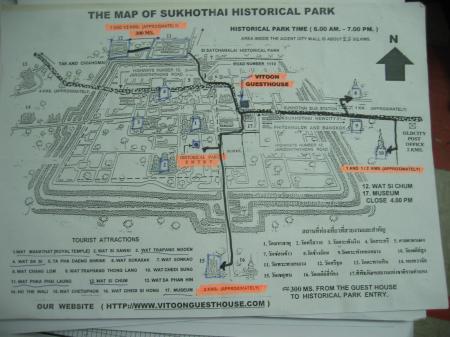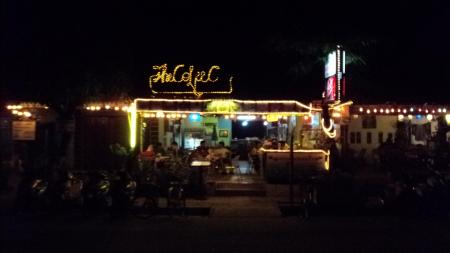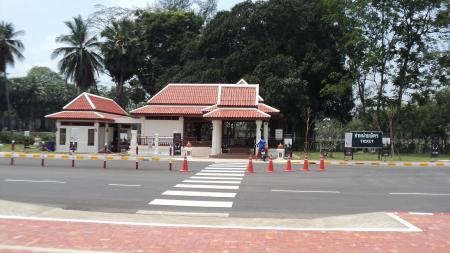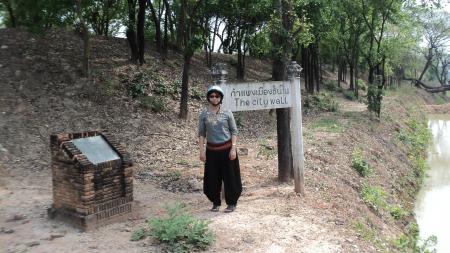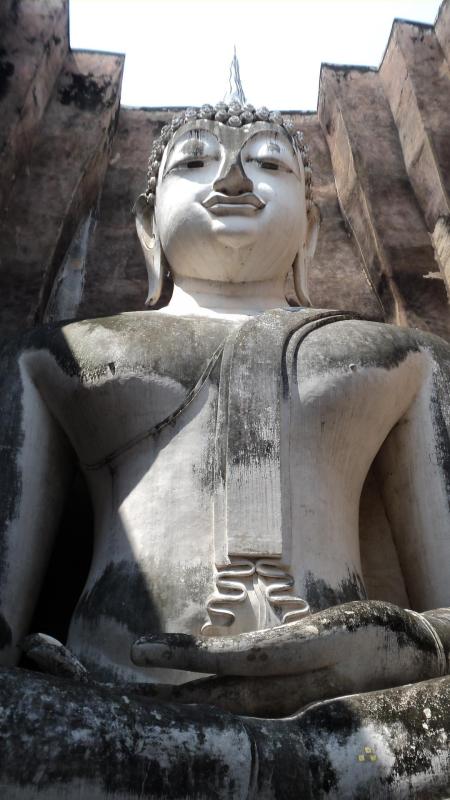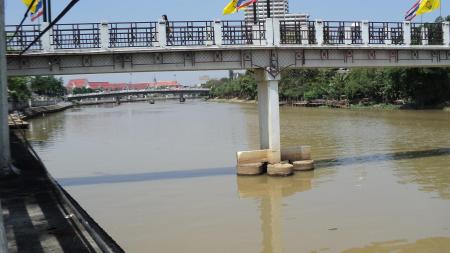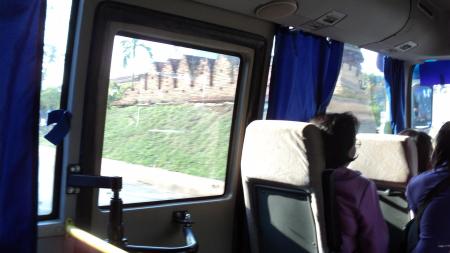The tomb of former Ayutthaya king Utumpon at Linzin hill, Taungtaman shore, Amarapura, near Mandalay, Myanmar
There have been news about the excavation of the Yodaya ယိုးဒယား (Ayutthaya) king’s tomb at the Linzin လင္းဇင္း (Lang Xang) hill at Mandalay (Taungtaman, Amarapura). It has been confirmed that it is the tomb of Ayutthaya king Utumpon. This led me to know more about the Linzin campaigns of the Konebaung era in 1763 and 1765 and also about the interesting life of king Utumpon.
First of all I wondered why the place is called Linzin (Lang Xang / Laos) hill and not Yodaya (Ayutthaya) hill.
While king Naungdawgyi was laying siege to the Toungoo, the vassal king loyal of Lan Na at Chiang Mai was overthrown.
After Toungoo was captured, Naungdawgyi then sent an 8000-strong army to Chiang Mai. The Burmese army captured Chiang Mai in early 1763
1763 – The Burmese invade Chiang Mai and the principality of Luang Prabang (now part of Laos) is captured.
It has also been mentioned that_
As a first step toward a war with the Siamese, Hsinbyushin decided to secure the northern and eastern flanks of Siam. In January 1765, a 20,000-strong Burmese army led by Ne Myo Thihapate based in Chiang Mai invaded the Laotian states. The Kingdom of Vientiane agreed to become Burmese vassal without a fight. Luang Prabang resisted but Thihapate’s forces easily captured the city in March 1765, giving the Burmese complete control of Siam’s entire northern border.
It must have been during these 2 wars with Lang Xang in 1763 and 1765 that captives from Lang Xang were taken back and settled near the Taungtaman lake, not far from Ava, and the place has been called Linzin hill since the time (Amarapura was not yet built at the time).
Burmese forces reached the outskirts of Ayutthaya on 20 January 1766. The Burmese then began what turned out to be a grueling 14-month siege. The Burmese forces finally breached the city’s defenses on 7 April 1767, and sacked the entire city. The Siamese royalty and artisans were carried back.
Hsinbyushin built a village near Mandalay for Uthumphon and his Siamese people—who then became the Yodia people. In accordance with Burmese chronicles, Uthumphon, as a monk, died in 1796 in the village. His is believed to be entombed in a chedi at the Linzin Hill graveyard on the edge of Taungthaman Lake in Mandalay Region‘s Amarapura Township.
Ex-king Utumpon (2 months rule 1758) was among those taken back to Ava and settled near present day Mandalay. However, the last Ayutthaya king Ekathat (1758–1767) was not among those captured and taken back.
During the 1767 siege of Ayutthaya_
King Ekathat and his family secretly fled from the capital. The nobles then agreed to surrender. On April 7, 1767, Ayutthaya fell.
Siamese chronicles said Ekkathat died upon having been in starvation for more than ten days while concealing himself at Ban Chik Wood (Thai: ป่าบ้านจิก), adjacent to Wat Sangkhawat (Thai: วัดสังฆาวาส). His dead body was discovered by the monk. It was buried at a mound named “Khok Phra Men” (Thai: โคกพระเมรุ), in front of a Siamese revered temple called “Phra Wihan Phra Mongkhonlabophit” (Thai: พระวิหารพระมงคลบพิตร).
King Utumpon was king of Ayutthaya for only 2 months after the death of his father king Borommakot.
One year before his death, Borommakot decided to skip Ekkathat and appointted Ekkathat’s younger brother, Uthumphon, as the Front Palace.
In 1758, Borommakot died. Uthumphon was then crowned, and Ekkathat entered in priesthood to signify his surrender. However, two months after that, Ekkathat returned and claimed for the throne.
1758, Aug – King Utumpon abdicates the throne and retires at Wat Pradu. He is succeeded by Prince Ekatat who assumes the title Boromaraja V
1760, Apr – King Alaungsaya lays siege on Ayutthaya. Siamese King Ekatat who senses that he is not up to the task of leading the defense of the city invites his younger brother, the former King Utumpon to rule temporarily in his behalf.
Only five days into the siege, however, the Burmese king suddenly fell ill and the Burmese withdrew.. (The Siamese sources say he was wounded by a cannon shell explosion while he was inspecting the cannon corps at the front.).
1762 – With the Burmese danger contained, Utumpon retires again and returns to his monastery, leaving the fate of Siam in the hands of his older brother, King Ekatat
The Burmese, however, came back in 1767 under the commission of Hsinbyushin and led by Neimyo Thihapate. Though he was strongly urged to take role in leading Siamese armies, Uthumphon chose to stay in the monk status. Ayutthaya finally fell. Uthumphon was captured by the Burmese forces and was brought to Burma along with a large number of Ayutthaya’s people.
Uthumphon was grounded near Ava, along with other Ayutthaya ex-nobles, where he was forced by the Burmese to give them knowledge about the history and court customs of Ayutthaya—preserved in the Ayutthayan affidavit. Hsinbyushin built a village near Mandalay for Uthumphon and his Siamese people—who then became the Yodia people. In accordance with Burmese chronicles, Uthumphon, as a monk, died in 1796 in the village. His is believed to be entombed in a chedi at the Linzin Hill graveyard on the edge of Taungthaman Lake in Mandalay Region‘s Amarapura Township.
ထိုင္းဘုရင္ အုတ္ဂူ အစစ္အမွန္ဟု အတည္ျပဳ
http://abbsoluteright.blogspot.com/2013/03/blog-post_8607.html
fromby ကိုကို 😀
ရန္ပိုင္
မႏၲေလးတိုင္း အမရပူရၿမိဳ႕ ေတာင္သမန္အင္းေစာင္း လင္းဇင္းကုန္း သုသာန္ရွိ ထုိင္းဘုရင္ေဟာင္း ဥတြန္ပုံ Utumpon ၏ အုတ္ဂူမွာ အစစ္ အမွန္ဟု အတည္ျပဳႏုိင္ၿပီျဖစ္ေၾကာင္း တူးေဖာ္ရာတြင္ေတြ႔ရွိရသည့္ အေထာက္အထားမ်ားကုိ ကုိးကား၍ ထုိင္းသမုိင္း ပညာရွင္မ်ားက ေျပာဆုိသည္။
အုတ္ဂူကုိ တူးေဖာ္စစ္ေဆးရာတြင္ အေရွ႕ေျမာက္ဘက္ အရန္ ေစတီတုိင္အတြင္းမွ အ႐ိုးမ်ားထည့္ထားသည့္ မွန္စီေရႊခ် သပိတ္ တလုံး ႏွင့္ ပန္းခ်ီေရးဆြဲထားသည့္ မွန္ခ်ပ္မ်ားေတြ႔ရျခင္း၊ ထုိင္း ရာဇအႏြယ္၀င္မ်ား၏ ထုံးတမ္းဓေလ့ႏွင့္အညီ ျမႇဳပ္ႏွံထားျခင္းမ်ားကုိ ေတြ႔ရသည့္အတြက္ မွန္ကန္သည္ဟု ယူဆျခင္းျဖစ္ေၾကာင္း သိရသည္။
ထုိင္းႏုိင္ငံမွ သမုိင္းႏွင့္ ေရွးေဟာင္းသုေတသနအဖြဲ႔ ဒုတိယေခါင္းေဆာင္ မစၥတာ မစ္ကီဟတ္က“အ႐ိုးေတြသပိတ္ထဲမွာ ထည့္ထား တယ္ ဆုိကတည္းက ဘုန္းႀကီး၀တ္နဲ႔ ပ်ံလြန္ေတာ္မူသြားတဲ့မင္းႀကီး ဥတြန္ပုံ ဆုိတာ ၉၉ ရာခုိင္ႏႈန္း ေသခ်ာသြားၿပီ”ဟု ဧရာ၀တီ ကုိ ေျပာသည္။
အဆုိပါ မွန္စီေရႊခ် ေျမသပိတ္သည္ အက်ယ္ ၈ . ၅ လက္မ၊ အျမင့္ ၅ . ၅ လက္မရွိၿပီး ႏႈတ္ခမ္းနားတြင္ ေရႊခ်ထားေၾကာင္း၊ သပိတ္ အဖုံး လက္ကုိင္မွာ ၾကာဖူးပုံသ႑ာန္ ျပဳလုပ္ထားၿပီး သုိ႔ေသာ္ ေက်ာက္စာ ကမၸည္းျဖင့္ မွတ္တမ္းတင္ ေရးထုိးထားျခင္းမရွိဟု သိရ သည္။
ဤအုတ္ဂူသည္ ေက်ာက္ဘြားေဒါက္မဒူူ၀ါး Dok Madua —”Dok Duea” (ดอกเดื่อ) and “Uthmphon” (อุทุมพร) are under the same meaning, “fig” ဘြဲ႔ခံံ ထုိင္းဘုရင္ေဟာင္း မင္းသားႀကီး ဥတြန္ပုံ ၏ အုတ္ဂူ အစစ္အမွန္ျဖစ္ေၾကာင္း မၾကာ မီ ထုိင္းႏုိင္ငံ ဘန္ေကာက္ ၿမိဳ႕၌ သတင္းစာရွင္းလင္းပြဲ ျပဳလုပ္မည္ျဖစ္ေၾကာင္း မစၥတာ မစ္ကီဟတ္က ေျပာသည္။
Thai Cultural Village to Be Built in Burma
By YAN PAI / THE IRRAWADDY| Friday, May 3, 2013 |
http://www.irrawaddy.org/archives/33591
A Thai cultural village is set to be built near the Burmese city of Mandalay, reflecting the ancient Siamese kingdom of Ayutthaya in a joint project Burma and neighboring Thailand.
Thailand’s Siam Society is reportedly seeking permission from local authorities in Mandalay to build the village at the edge of Taungthaman Lake in Amarapura Township, in a bid to preserve the culture of Thai people living in Mandalay in the 18th century.
The Siam Society, under the Thai royal patronage, was founded in 1904 in cooperation with Thai and foreign scholars to promote knowledge of Thailand and its surrounding region.
The push to build the cultural village follows the discovery last month that the former Siamese King Uthumphon—better known in Thai history as King Dok Madua, or “fig flower”—and other royal family members were buried at a prominent graveyard near the lake.
“A lot of Thai people arrived in Burma as prisoners of war and asylum seekers,” said Mickey Heart, a historian and deputy chief the excavation team that uncovered Uthumphon’s tomb.
He added that a large number of Thai people from Thailand’s Tak Province later migrated to Burma because of internal disputes in Ayutthaya Kingdom and were allowed to settle in Mandalay’s Yahai Quarter.
According to Burmese history records, King Hsinbyushin, the third king of Burma’s Konbaung Dynasty, invaded the ancient Thai capital of Ayutthaya in 1767 and brought as many subjects as he could, including Uthumphon, back to his own capital, Ava.
Residential areas and markets were named after Thai people settling around Mandalay and Ava at the time, and even today, the region boasts elements of Thai culture in certain religious practices, cuisines, and arts and crafts.
“A hybrid culture, the combination of Burmese and Thai, emerged following the death of those who were brought from Ayutthaya,” said Heart. “The smell of that culture can be felt around Mandalay these days.”
Meanwhile, since the excavation of the former Siamese king’s tomb, Thai media has recommended the burial place as a tourist attraction for Thai travelers.
Although Thai historians initially disagreed over whether to excavate the tomb, the project was initiated by the Siam Society following a report by The Irrawaddy in July last year that the burial place would be destroyed by local authorities in Mandalay to make way for a new urban development project.
King Utumpon
http://en.wikipedia.org/wiki/Uthumphon
|
Uthumphon |
|
|
King of Ayutthaya |
|
|
Reign |
1758 |
|
Predecessor |
Borommakot |
|
Successor |
Ekkathat |
| Ban Phlu Luang Dynasty | |
|
Father |
King Borommakot |
|
Mother |
Krom Luang Phiphit Montri |
|
Born |
Unknown |
|
Died |
1796 Mandalay, Konbaung Kingdom |
Somdet Phrachao U-thumphon (Thai: สมเด็จพระเจ้าอุทุมพร)[1] or Phra Bat Somdet Phra Chao Uthomphon Mahaphon Phinit (Thai: พระบาทสมเด็จพระอุทุมพรมหาพรพินิต) was the 32nd and penultimate monarch of the Ayutthaya Kingdom, ruling in 1758 for about two months. Facing various throne claimants, Uthumphon was finally forced to abdicate and enter monkhood. His preference of being a monk rather than keep the throne, earned him the epithet “Khun Luang Ha Wat”[1] (Thai: ขุนหลวงหาวัด), or “the king who prefers the temple”.
Prince Dok Duea or Prince Uthumphon—”Dok Duea” (ดอกเดื่อ) and “Uthmphon” (อุทุมพร) are under the same meaning, “fig”—was a son of Borommakot. In 1746, his elder brother, Prince Thammathibet who had been appointed as the Front Palace, was beaten to death for his affair with one of Borommakot’s concubines. Borommakot didn’t appoint the new Front Palace as Kromma Khun Anurak Montri or Ekkathat, the next in succession line, was proved to be incompetent. In 1757, Borommakot finally decided to skip Anurak Montri altogether and made Uthumphon the Front Palace—becoming Kromma Khun Phon Phinit.
In 1758, upon the passing of Borommakot, Uthumphon was crowned. However, he faced oppositions from his three half-brothers, namely, Kromma Muen Chit Sunthon, Kromma Muen Sunthon Thep, and Kromma Muen Sep Phakdi. Uthumphon then reconciled with his half-brothers and took the throne peacefully.
Ekkathat, who had become a monk, decided to made himself a king only two months after Uthumphon’s coronation. The three half-brothers resented and fought Ekkathat, and they were executed by Ekkathat. Uthumporn then gave up his throne to his brother and leave for the temple outside Ayutthaya so as to become a monk.
1758, Aug – King Utumpon abdicates the throne and retires at Wat Pradu. He is succeeded by Prince Ekatat who assumes the title Boromaraja V
In 1760, Alaungpaya of Burma led his armies invading Ayutthaya. Uthumphon was asked to leave monkhood to fight against the Burmese. However, Alongpaya died during the campaigns and the invasion suspended. Uthumphon, once again, returned to monkhood.
1760, Apr – King Alaungsaya lays siege on Ayutthaya. Siamese King Ekatat who senses that he is not up to the task of leading the defense of the city invites his younger brother, the former King Utumpon to rule temporarily in his behalf
1762 – With the Burmese danger contained, Utumpon retires again and returns to his monastery, leaving the fate of Siam in the hands of his older brother, King Ekatat
1766, Feb – The Burmese begin their siege of Ayutthaya. King Ekatat again offers his brother Utumpon to lead the defence of the city but this time Utumpon declines.
1767, Apr 7 – After 14 months of siege, Ayutthaya falls and King Ekatat flees.
Uthumphon was captured by the Burmese forces and was brought to Burma along with a large number of Ayutthaya’s people.
Uthumphon was grounded near Ava, along with other Ayutthaya ex-nobles, where he was forced by the Burmese to give them knowledge about the history and court customs of Ayutthaya—preserved in the Ayutthayan affidavit. Hsinbyushin built a village near Mandalay for Uthumphon and his Siamese people—who then became the Yodia people. In accordance with Burmese chronicles, Uthumphon, as a monk, died in 1796 in the village. His is believed to be entombed in a chedi at the Linzin Hill graveyard on the edge of Taungthaman Lake in Mandalay Region‘s Amarapura Township
ps
I have begun my blog about Yodaya king’s tomb in Linzin kone (hill) several months ago when it was not mentioned as to which Ayutthayan king it was. I could not complete it at the time, and only completed it this morning. It has now come out in an entirely different form as it has been confirmed as being king Utumpon’s tomb during the interval. I’m glad I did not finish it earlier, as the draft was vague and even included king Bayintnaung’s wars into Linzin as I was not aware at the time of the 2 Linzin wars during Hsinbyushin’s era.
My main interest in history and archeology is pre-history and the Pyu. I had been to Dawei last month and visited the Thargara Pyu (and later Mon) city in Laung Lon township, not far from Dawei. I will write a blog about my visit to the Thargara city, but, it will be more of a travelogue as I find little facts.

